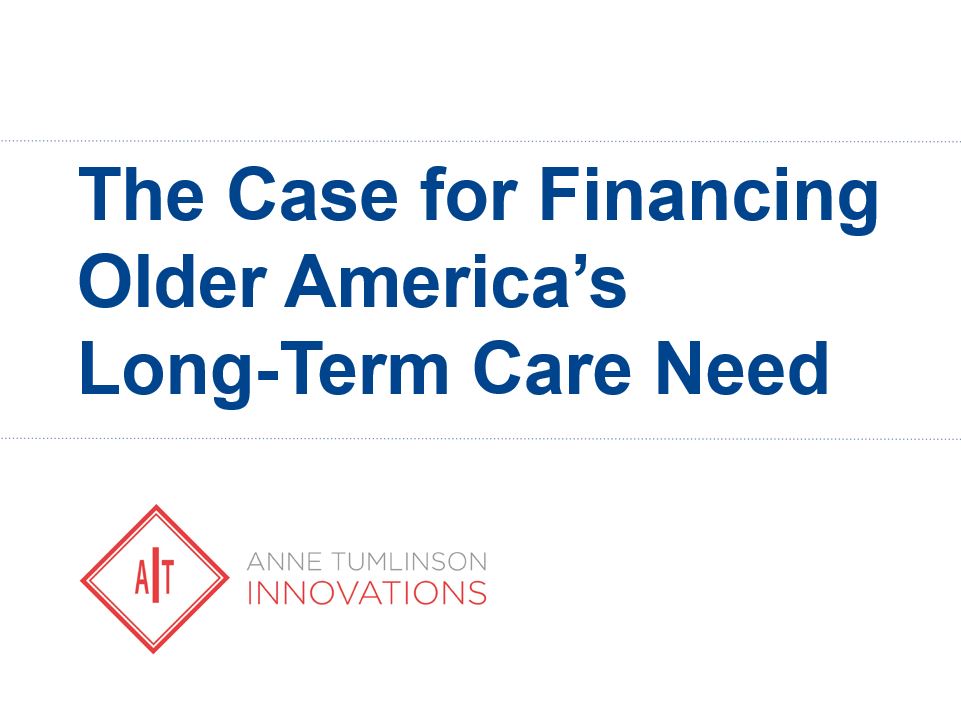The Case for Financing Older America’s Long-Term Care Need
summary
In this slide deck we discuss the case for financing older America’s long-term care need.
Date Updated: 09/15/2016As we age, needing help to take care of ourselves is a risk we all face regardless of gender, ethnicity, income, wealth, and other characteristics. This risk increases over time. Half of Americans who live to age 65 will — at some point — need help with multiple basic life tasks, and a smaller percentage of us will need help spanning many years.
The majority of people with high levels of need live at home and receive care from unpaid family members. When they need services, like personal care or home modifications, they generally pay out of pocket. For very low-income individuals, Medicaid plays an important financing role, particularly for those with long-term care (LTC) needs who have exhausted their savings…
Download the publication for all visuals and complete references.
Continue Reading
This policy brief provides background on the historical development of benefit eligibility triggers in the private long-term care insurance market. Understanding how these triggers came into being can provide important information to those charged with implementing the CLASS Plan.
This policy brief provides information about how long-term care insurers implement benefit eligibility triggers in the private insurance market. The way in which companies have operationalized benefit eligibility triggers can inform the development of regulations for the CLASS Plan.
This policy brief provides information on the benefit eligibility assessment process in the private long-term care insurance industry. It focuses on how long-term care insurers use the information in the adjudication process, who is involved in the process, and how activities of daily living and cognition are assessed.


